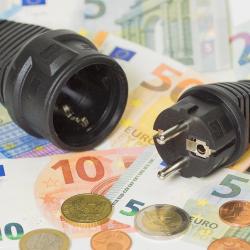How to Make Your Home More Energy-Efficient
Creating an energy-efficient home is a practical and financially savvy move that benefits both the environment and your wallet. By reducing energy consumption, you can lower your utility bills, decrease your carbon footprint, and enhance the comfort of your living space. Here's a comprehensive guide on how to make your home more energy-efficient.
Understanding Energy Efficiency
Energy efficiency refers to using less energy to perform the same task. This means optimizing how you utilize energy resources to maintain or improve comfort, convenience, and even aesthetics in your home. An energy-efficient home minimizes waste while maximizing output.
1. Conduct an Energy Audit
Before making any changes, conduct an energy audit to identify areas where your home is losing energy. You can hire a professional auditor or perform a simple do-it-yourself audit using online guides. An audit will help pinpoint leaks, inefficient systems, and other areas for improvement.
2. Upgrade Insulation
Proper insulation is key to maintaining a consistent indoor temperature. Consider upgrading insulation in your walls, roof, and floors. Look for materials with high R-values, which indicate better thermal resistance. Don’t forget about the basement and attic, which are common culprits for heat loss.
3. Seal Windows and Doors
Windows and doors can be significant sources of energy loss. Use weatherstripping and caulk to seal any gaps or cracks. Consider upgrading to double-glazed windows or those with low-emissivity (Low-E) coatings, which reduce heat transfer and improve overall insulation.
4. Invest in Energy-Efficient Appliances
Replace old appliances with energy-efficient models that have the Energy Star label. These appliances meet strict efficiency criteria and will use significantly less energy than older models. Consider upgrading your refrigerator, dishwasher, washing machine, and dryer first, as these are the biggest energy-consuming appliances in most homes.
5. Install a Programmable Thermostat
A programmable thermostat can significantly reduce energy usage by adjusting the temperature based on your schedule. Some models can be controlled remotely via smartphones, allowing you to optimize heating and cooling even when you’re away.
6. Switch to LED Lighting
Replace incandescent bulbs with LED alternatives, which use up to 75% less energy and last 25 times longer. LED lighting is available for all your lighting needs, from accent lighting to outdoor floodlights, offering both efficiency and versatility.
7. Use Smart Power Strips
Smart power strips can prevent electronics from using energy while they’re not in use. Regular outlets can allow electronics to consume energy even when turned off; smart power strips eliminate this issue by detecting when a device is in standby mode.
8. Consider Solar Panels
If you're ready for a bigger investment, consider installing solar panels. While the initial cost can be high, government incentives often help offset the price. Solar panels can provide significant savings over their lifetime by reducing or even eliminating your electricity bills.
9. Maximize Natural Light
Utilize natural daylight to reduce reliance on artificial lighting. Arrange rooms to take advantage of sunlight, and choose window treatments that allow light in while maintaining privacy. This can dramatically reduce lighting costs and improve your home’s ambience.
10. Implement Water-Saving Solutions
Reducing water usage contributes indirectly to energy savings, especially if you're heating that water. Install low-flow toilets, showerheads, and faucets. Consider a water heater upgrade to a tankless or solar water heater system for more efficiency.
11. Enhance Heating and Cooling Systems
Maintain your heating, ventilation, and air conditioning (HVAC) systems to ensure they’re working efficiently. Schedule annual check-ups, replace filters regularly, and consider upgrading to an energy-efficient model if yours is outdated.
Final Thoughts
Transforming your home into an energy-efficient haven doesn’t happen overnight, but each step you take makes a difference. Start by prioritizing changes that offer the greatest savings and are most feasible for your budget. Not only will you enjoy the tangible benefits of cost savings and increased comfort, but you’ll also be contributing to a more sustainable future.
By following these steps, you can enjoy the rewards of an energy-efficient home while helping to protect our planet for generations to come.






















